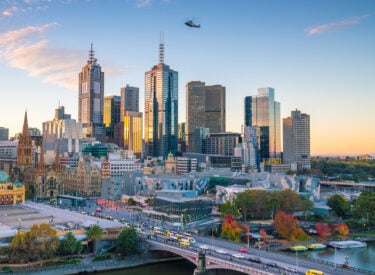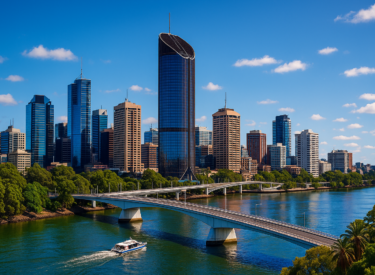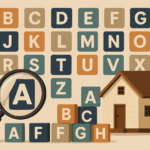
Key takeaways
Despite popular belief, rising interest rates aren't the primary cause of increasing rents. The RBA's research indicates that rent prices are determined by supply and demand, not by landlords’ mortgage costs.
The main driver of the rental crisis is rapid population growth, particularly due to record-high immigration levels. This has created strong demand for rental properties, outstripping supply.
New housing supply has been slow to keep pace with demand, affected by regulatory hurdles, supply chain disruptions, and rising construction costs. This shortage is causing rents to rise.
Blaming interest rates for the rental crisis oversimplifies the problem. The real solution lies in addressing the housing supply-demand imbalance through structural changes like speeding up housing approvals and incentivising affordable housing.
To solve the rental crisis, policies should target increasing housing supply, balancing population growth with housing availability, and promoting regional development to ease pressure on major cities.
Even though some landlords face higher mortgage costs, their ability to increase rents is constrained by market competition. Rents are more influenced by demand than by landlords' financial needs.
The current rental crisis in Australia has sparked significant debate, with many quick to blame rising interest rates as a key culprit.
However, the RBA has debunked this myth in its bulletin Do Housing Investors Pass-through Changes in Their Interest Costs to Rents?

Sure, higher rates certainly influence the property landscape, but according to the RBA, they aren't the primary driver of the rental crisis.
Instead, there are deeper structural issues at play, particularly related to population growth and supply constraints.
The popular argument: interest rates drive rent increases
The logic behind this argument is straightforward.
As interest rates rise, mortgage repayments for landlords become more expensive.
To offset this increased cost, landlords supposedly raise rents, passing on the financial burden to tenants.
With record-high interest rates, it’s tempting for some negative nellies to see this as the key driver behind rising rents.
However, when the RBA analysed the relationship between rising interest costs and rent increases, their findings were eye-opening.
Here’s what the RBA found: interest rates don’t directly impact rents
According to the RBA’s research, the idea that landlords automatically pass on their higher mortgage costs to renters doesn't hold water.
The RBA points out that landlords cannot simply raise rents because their costs have gone up.
Rent prices are predominantly determined by supply and demand conditions in the rental market, not by the financial needs of landlords.
In fact, in a competitive market, where tenants have multiple housing options, landlords can’t arbitrarily increase rents just because their mortgage repayments have risen.
If they try to raise rents beyond what the market can bear, tenants will simply look for cheaper alternatives.
This shows that landlords are price takers rather than price setters when it comes to rents.
In other words, while landlords might wish to pass on their costs, the broader rental market simply doesn’t function that way.
The reality is that rents are influenced more by the dynamics of supply and demand than by a landlord’s rising interest bill.

What’s really driving the rental crisis?
The RBA’s findings shift the focus to the real driver of the rental crisis: population growth.
In their analysis, the RBA emphasises that “excessive population growth” is the primary cause behind Australia’s tight rental market.
Australia’s population has been growing rapidly, primarily driven by record levels of immigration.
According to data from the Australian Bureau of Statistics, Australia’s net overseas migration reached record levels in 2023, with over 400,000 new arrivals.
This surge in population has created unprecedented demand for housing, especially in urban areas.
However, while demand for housing has soared, the supply side has struggled to keep pace.
New housing construction has been sluggish, compounded by supply chain disruptions, labour shortages, and rising construction costs.
The combination of strong demand and limited supply has led to a significant shortage of rental properties, pushing rents higher.

Supply shortages: a critical factor
The lack of sufficient housing supply has been a long-standing issue in Australia, exacerbated by zoning restrictions, lengthy approval processes, and other regulatory hurdles.
This supply-demand imbalance is at the heart of the rental crisis.
High levels of migration have intensified the demand for rental properties, but with insufficient new housing being built, the competition for available properties has driven rents up.
In general, landlords have been able to raise rents simply because demand vastly outstrips supply, not because they are passing on increased interest costs.
In fact, the level of rental increase has not usually covered the extra cost of being a rental accommodation provider.
The broader economic context
It’s also important to recognise that while interest rates are high, they are high for everyone, not just property investors.
Interest rate hikes are part of the RBA’s broader strategy to curb inflation by slowing economic activity.
Higher borrowing costs are intended to cool down demand, but this tactic has had limited success in the housing market due to Australia’s housing supply constraints.
Moreover, many landlords may have locked in fixed-rate mortgages when rates were lower, meaning they aren’t immediately affected by the rise in interest rates.
For those on variable rates, while their mortgage costs may have increased, their ability to raise rents remains constrained by the supply and demand conditions in their local market.

The danger of simplistic narratives
Blaming interest rates for the rental crisis risks oversimplifying the problem and overlooking the structural issues that have led to Australia’s current housing shortage.
If policymakers focus too narrowly on interest rates as the cause, they will miss the opportunity to address the root causes of the problem: the need for increased housing supply and better planning to accommodate Australia’s growing population.
Addressing the real issues
To tackle the rental crisis, the focus should be on increasing the supply of housing, particularly affordable rental housing.
This requires:
- Fast-Tracking Housing Approvals: Reducing the bureaucratic red tape and streamlining the approval process for new housing developments can help bring more homes to market faster.
- Incentivizing Affordable Housing: Governments can offer incentives to developers and investors to build more affordable rental properties, including tax breaks or subsidies for affordable housing projects.
- Balancing Population Growth and Housing Supply: While migration is critical in providing the extra tax-paying workers we need and bringing other significant economic benefits, it must be balanced with an adequate housing supply. Governments need to ensure that infrastructure and housing are planned in conjunction with population growth.
- Encouraging Regional Development: Incentivizing migration to regional areas can help alleviate pressure on housing in major cities while also promoting economic growth in regional communities.
The bottom line…Population growth, not interest rates, is the primary cause
While it’s easy to point the finger at rising interest rates as the cause of Australia’s rental crisis, the RBA’s research highlights that interest rates have little direct impact on rents.
Instead, the rental crisis is driven by excessive population growth outstripping the available housing supply.
If we are serious about solving the rental crisis, we need to focus on policies that increase the supply of affordable housing and ensure that population growth is managed in a way that doesn’t put undue pressure on the housing market.
Only then can we hope to create a more balanced and sustainable rental market in Australia.














